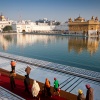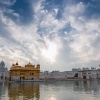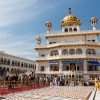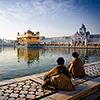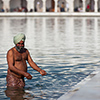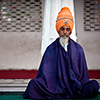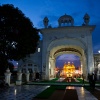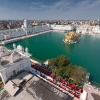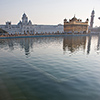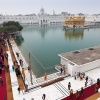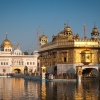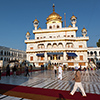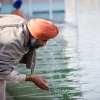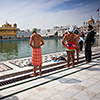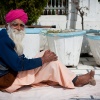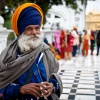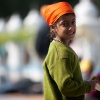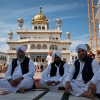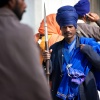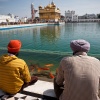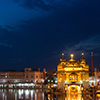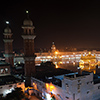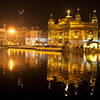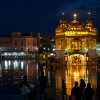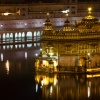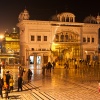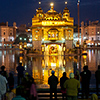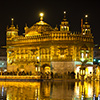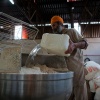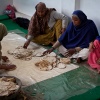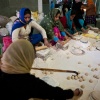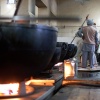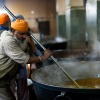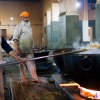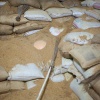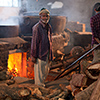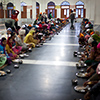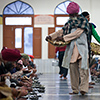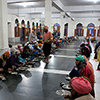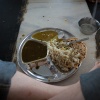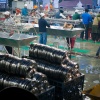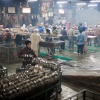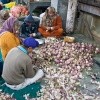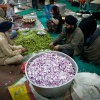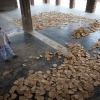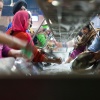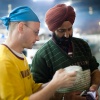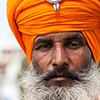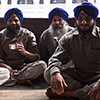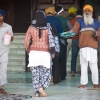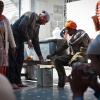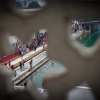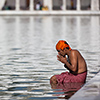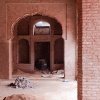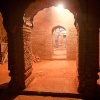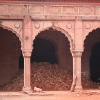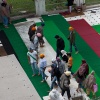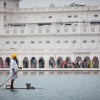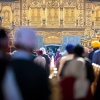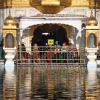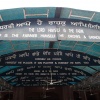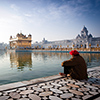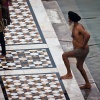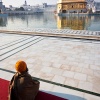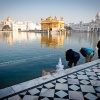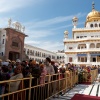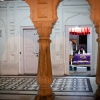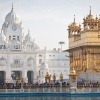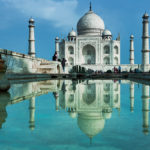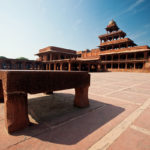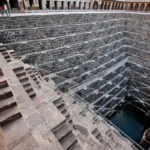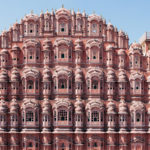Behind the Scenes of the Golden Temple in Amritsar
The university town of Amritsar can truly be called to be the heart of Punjab. The city is located not too far from Pakistani border and is an important commercial hub as well as religious centre of the Sikhs, as it is the home of one of their highest sanctuaries, the Golden Temple. The temple complex has a wonderful open-minded, hospitable and spiritual atmosphere and allows interesting in-depth insights in the daily routine of pilgrims and the temple itself.
It is early in the morning and the cold marble tiles are making one’s feet shivering. Despite and low temperatures and despite the fact having spent the fourth day in a row in and about the temple premises, it is still something very spiritual to enter the Golden Temple. The whole temple complex gets embraced by meditative-hypnotic live mantras sung inside the sanctuary while in its surrounding Pool of the Nectar of Immortality big carps and goldfishes are swimming round by round. Every visitor is surrendering to the place’s magic, no cell phone is ringing and even urban traffic’s omnipresent annoying horns and honking are not able to disturb this peaceful hideaway.
The Sikhs and above all the Golden Temple complex understand each other as a community paying respect and reverence to a certain way of life, for instance when working at the temple on a fully voluntary basis. Of course there is something like a core team taking care of the temple, but the most fascinating example of this community idea is the kitchen, where food is produced day-to-day at no charge for thousands of pilgrims. The temple kitchen’s storages are filled to the rim, as for instance about 150 big propane gas cartouches are needed per day. Also its stock of sacks full of wheat, lentils, palm oil as well as onions, garlic, chilli and of course Ghee is huge.
Kitchen and dining area are able to cater more than 3000 pilgrims within 15-20 minutes. The food being served is always vegetarian as Sikhs are not allowed to eat living creatures; hence the food is strictly vegetarian, often a thickened lentil soup followed by a vegetable curry besides lots of Chapati bread and in the end caramelised wheat or rice pudding, both coming with almonds, as dessert. You can get as many refills as you want from the men walking with their metal buckets through the rows of eating pilgrims. After having given away your plate and spoon, it becomes washed six single times. As for cleanliness in extra-ordinarily dirty India, the Golden Temple is a blessing. Even the toilets are pleasing and don’t look like as if half of the nation used it before.
The machine to bake Chapati breads is producing about 8000 instantly edible flat breads per hour. Same superlative applies to the kitchen itself, where men with huge beards are preparing huge amounts of lentil soup, curries and rice pudding in huge tubs. The temple has two kitchens, one with gas firing and another one with conventional wood fired cooking zones. In particular at the latter kitchen it smells great as the fire is often fed with sandal wood.
The meal created by the Sikh community and on a voluntary basis is superbly satisfying. It is also quite a good start to surrender yourself to the temple’s atmosphere for hours. There are not many places in the world that are so spiritual but also open-minded at the same time.
In contrary to Mecca, where only Muslims are allowed to visit, the Golden Temple and Sikhism is accepting everyone; no artificial boundaries are defined. Even if there’s someone looking a little grumpily at you, it only takes a nod with folded hands and maybe wishing a Good Day and all things called ice are entirely broken and you get to know people from Kashmir to Canada.
Incidentally Sikhs are seeing their Guru’s more as a reformer than a deity. They are worshipping them for their innovative state of mind and actions at a time when India was religious open-minded, but segregated by the Caste system and strongly patriarchal governed by Moguls and Muslims. For example wearing a turban and having a beard was not permitted by the Muslims.
Above all the Hindu society is pretty constrained as members of certain Castes cannot participate in social and religious live at all. The Sikh community does not know about suchlike boundaries and they even offer me, the blue eyed blond foreigner with a Christian background, to carry their Holy Book on the occasion of their evening ceremony by giving their hand and saying “you are very welcome”. What other religion lets you get in touch that close with most important sanctuaries? Mecca and Medina bans all Non-Muslims and even for Christians it is hard to have a look at St. Peter’s shrine in Rome.
The north eastern part of the white temple building houses the Sikh museum. Many scary paintings are displaying Sikhs’ way of suffering in a pretty detailed way. The farther end of this institution exhibits photos of the men killed in 1984 when the Indian army carried out operation Blue Star. In about 2-3 years the museum will move to new rooms being located at the south eastern bank of Nectar Pool. Those rooms are easy to notice as they aren’t white but as red as Delhi’s Red Fort. The columns were even taken from that fortress.
The moment of entering the actual Golden Temple is something very emotional even for Non-Sikhs. Inside men are sitting around the 1430 pages comprehending book “Guru Granth Sahib“ and are song-like quoting mantras from it while your own heart starts to beat louder. Having reached this place, people are giving their donation to the Sikh community and proceed on to the Holy Lake to take a sip of water. Before walking to the exit, you should visit the mezzanine floor as well as the temple roof.
There is something sad about this place though, since as soon as the pilgrims are leaving the temple complex, the usual Indian madhouse called daily routine starts again and everyone is walking, cycling or driving desultorily; fortunately in Amritsar things are not that mad like in the land of Hindus though. A little bit more Golden Temple in everyone’s hearts would be very good for all of us, not only India.

